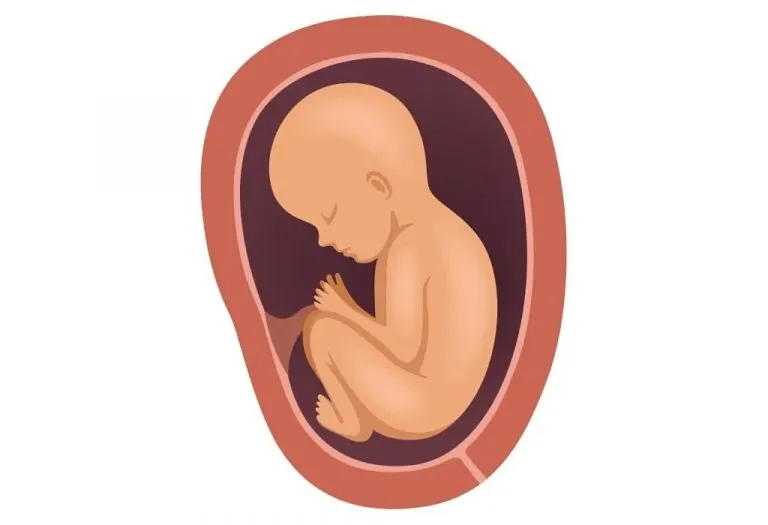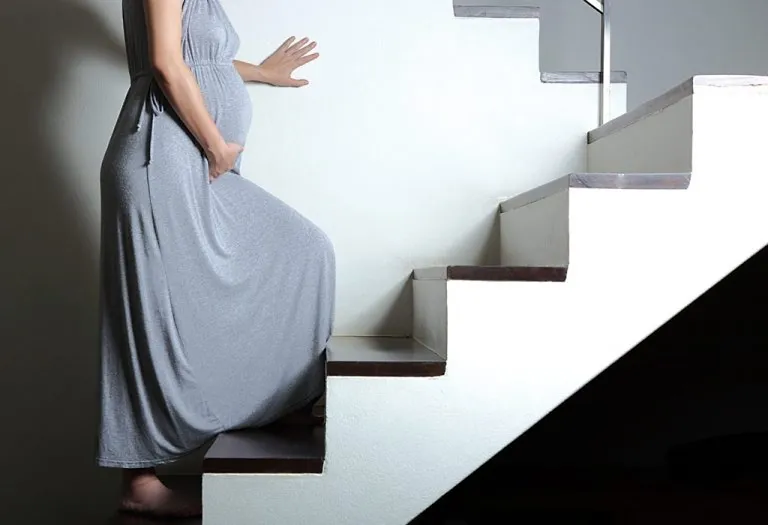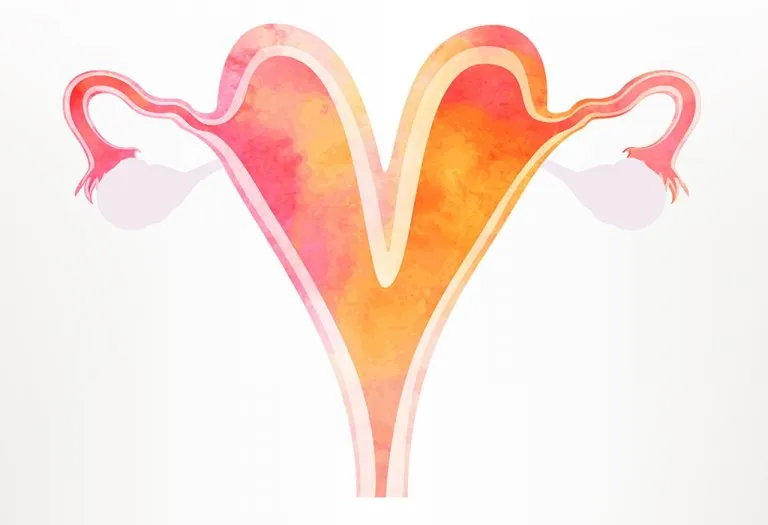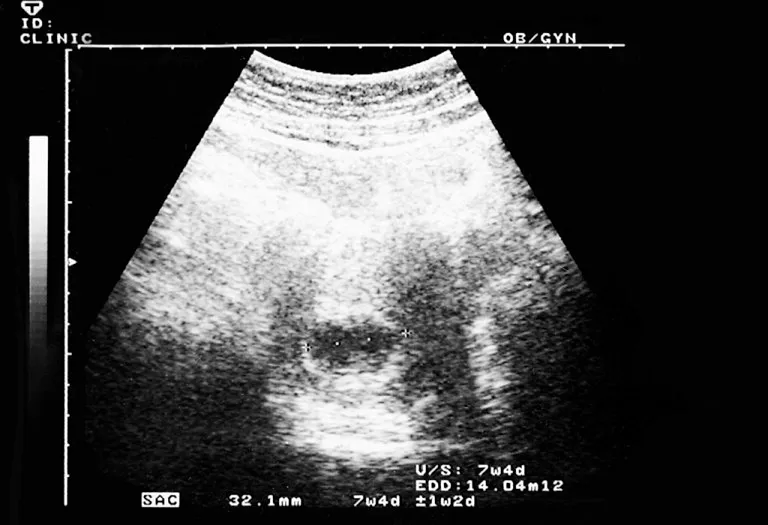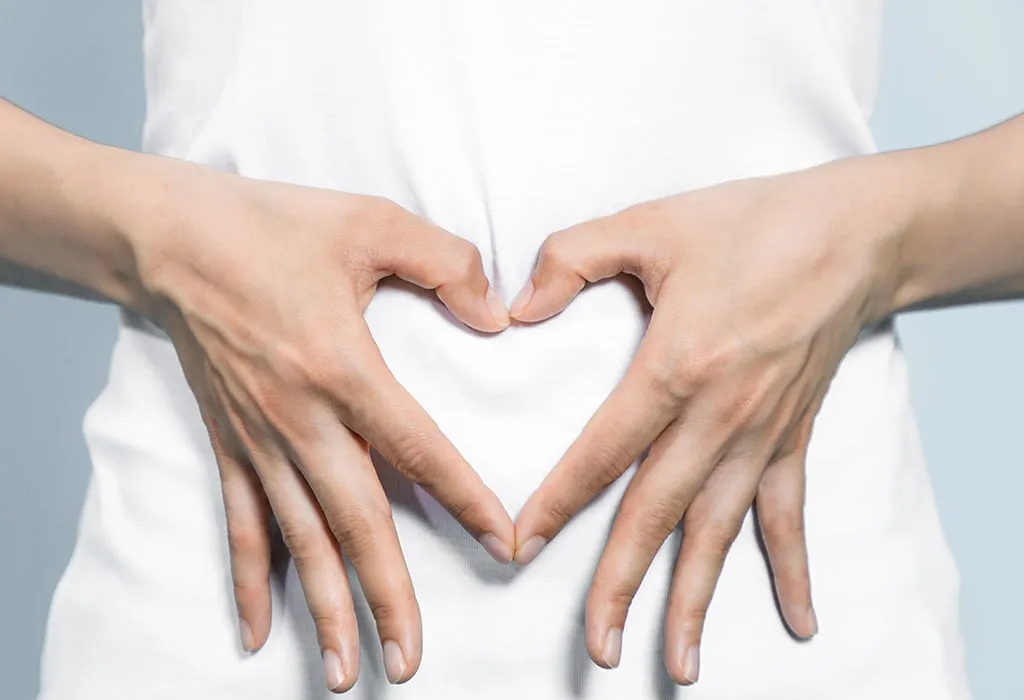Positions of the Baby in the 8th Month of Pregnancy

- What Should Be the Ideal Position of the Baby During the Eighth Month of Pregnancy?
- What Can Be the Different Positions of the Baby During the 8th Month of Pregnancy?
- How to Get a Baby Into the ‘Head-Down’ Position?
- Things You Can Do to Get Your Baby in the Right Position
- FAQs
When you reach the eighth month of your pregnancy, you will finally feel you are almost there. A couple more months later, you will soon have your baby. This is a crucial time of your pregnancy, and your doctor will suggest an ultrasound to check whether your baby is in the correct position. Baby position in the 8th month of pregnancy can vary, with many babies settling into a head-down position in preparation for birth (4). If you are eight months pregnant or soon will be, read on to know the ideal position of the baby in the eighth month of pregnancy and the different positions a baby can get into.
What Should Be the Ideal Position of the Baby During the Eighth Month of Pregnancy?
The ideal baby position at 8 months is typically head-down. After 32 weeks of pregnancy, the baby’s head should face the birth canal, and his legs should point toward his mother’s rib cage (1).
What Can Be the Different Positions of the Baby During the 8th Month of Pregnancy?
During the 8th month of pregnancy, baby positions may vary as they grow and prepare for birth. Here are the different positions your baby could get into during the eighth month of your pregnancy:
1. Breech Position
A baby is in the breech position when he is positioned ‘head-up’ in the woman’s uterus, and his feet are pointed towards the birth canal (5). Around 4% of babies are in the breech position before childbirth. Due to such a position, the baby’s head is the last portion to come out, complicating its passage through the birth canal. This is not an ideal position for a baby, as the baby can develop hip problems later in life. If the baby is in the breech position and standard delivery is attempted, the baby might go into trauma in the process of childbirth. The baby may also get injured if delivered vaginally. When a baby is in the breech position, he should be delivered via C-section (6).
2. Transverse Lie Position
Only 0.05% of babies assume the transverse position before childbirth. In this position, the baby lies horizontally instead of vertically, with his head pointed towards the stomach’s left or right side. A baby may get into the transverse lie position because of some anomalies in the structural formation of the uterus itself (7).
3. Posterior Position
This is a variant of the usual normal (or ideal) delivery position. In this position, a baby’s head points toward the birth canal, and his feet move upward. However, the baby faces the mother’s stomach from the inside rather than facing the mother’s back, which is ideal. This position called the occiput-posterior position, could cause the mom-to-be severe back pain and prolong the delivery process, too (2).
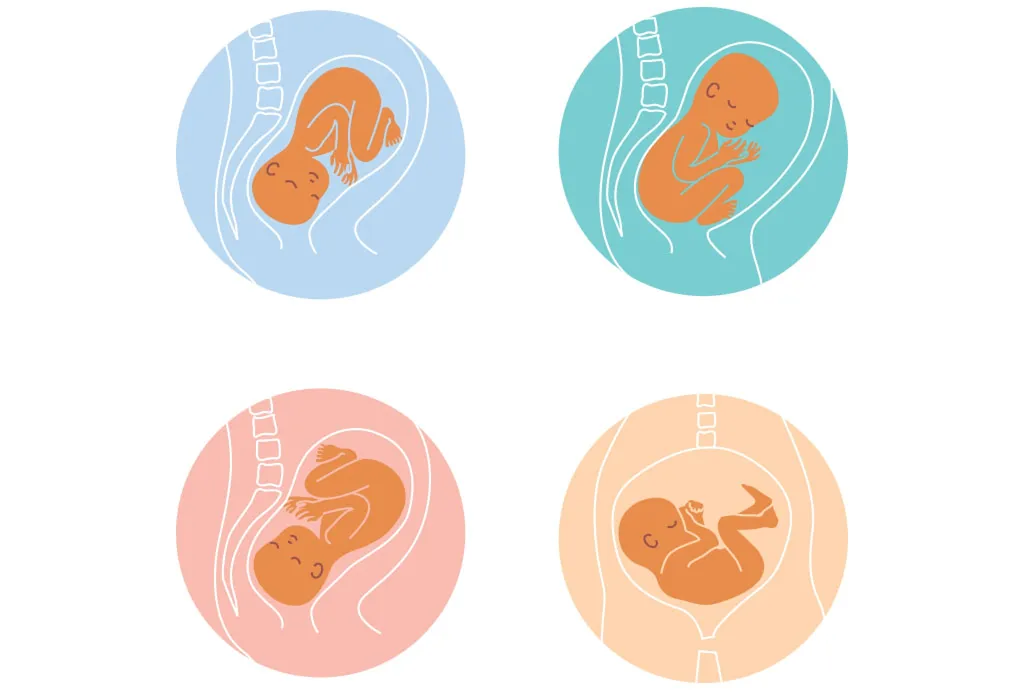
How to Get a Baby Into the ‘Head-Down’ Position?
During the 8th month, baby’s position in the womb becomes a topic of increasing importance. The baby should be in the ideal position during the eighth month of pregnancy for a successful and risk-free delivery. If your baby is not in the correct position for delivery, it could lead to several complications. Specific procedures might be undertaken to get the baby into the proper position.
Firstly, doctors will recommend an ultrasound scan to get a clearer picture of the baby’s position in the womb. If a breech position is observed, most doctors attempt to reorient the baby using manual techniques. One of the techniques that doctors usually suggest is the external cephalic technique. Techniques like these can be beneficial if undertaken in the 36th week of the pregnancy, as during this time, the baby’s smaller size makes reorientation easier (9). It can still be done until the 42nd week of the pregnancy, but chances of reorientation reduce accordingly.
In the initial attempt, tocolytic medication will be administered to the pregnant woman to relax the uterus. This will prevent any untoward contractions from taking place. Once the uterus relaxes, the doctor will hold the baby’s head with one hand and his buttocks with another and gradually reorient the baby to bring his head down. This is done very gently without causing harm to the baby, but it may cause slight pain to the pregnant woman if her uterus contracts.
Although vaginal delivery might be possible after this, most doctors don’t recommend it, especially for first-time mothers, since the pain can be tremendous. An emergency delivery might be suggested after this. Here, the pregnant woman will be administered epidural anaesthesia to mitigate the pain that might arise (8). This is conducted under strict medical supervision as certain complications can occur.
Things You Can Do to Get Your Baby in the Right Position
Here are some simple exercises to get your baby into the correct position.
1. Walk
Walking is one of the best exercises for positioning your baby correctly. As you approach your delivery date, walk for at least half an hour twice a day; the rhythmic movement and the effect of gravity will cause the centre of gravity inside your body to orient accordingly. Since the baby’s head is the heaviest part, it will tend to point toward the earth.
2. Try Yoga
Yoga may also prove beneficial if done prior to the last trimester of your pregnancy (10). Do not attempt this when your delivery date is near, especially if you are trying yoga for the first time. Also, do not try complicated exercises—stick to simple exercises and try them under supervision.
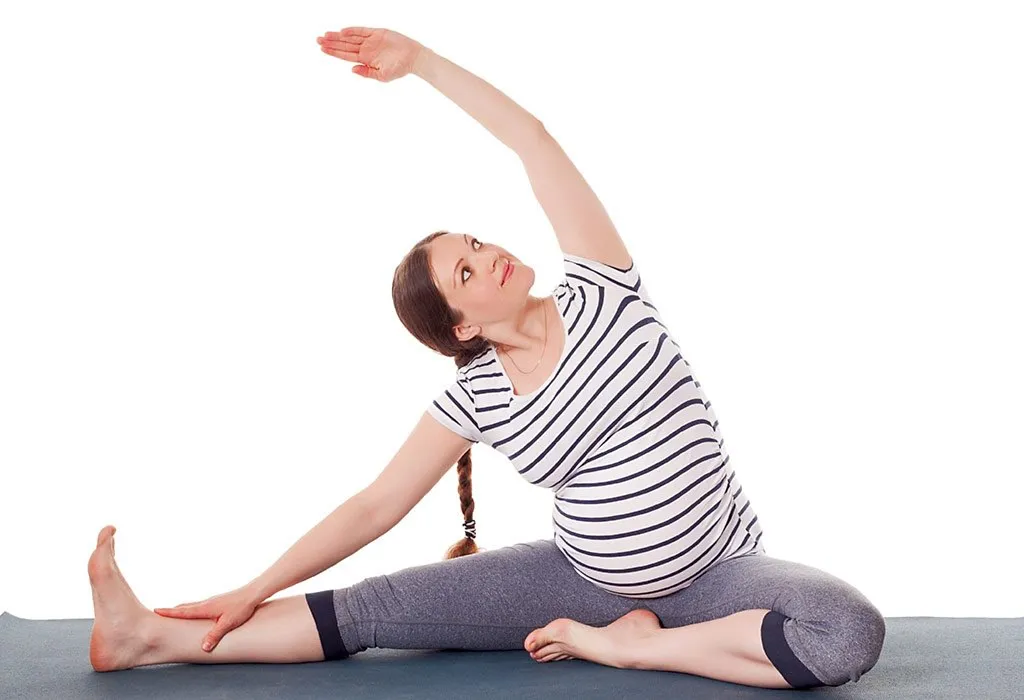
3. Try Swimming
This works best since it doesn’t impact the baby much and is easier for the mother. By swimming in a breaststroke fashion, the buoyancy of water can help your baby turn its position quickly and help your body undergo labour better.
4. Practice Good Posture
Maintaining good posture, especially sitting and standing, can encourage your baby to settle into a head-down position. Avoid slouching to promote optimal fetal positioning, and try sitting on a birth ball instead of a recliner or sofa.
5. Pelvic Tilts and Exercises
Gentle exercises and pelvic tilts (3) can help create space in your pelvis and encourage your baby to move into the desired position. Consult a doctor or prenatal yoga instructor for safe and effective exercises to promote optimal fetal positioning.
FAQs
1. Is it normal for the baby to change positions frequently in the 8th month?
Yes, it is normal for babies to change positions frequently during the eighth month of pregnancy. As they grow and develop, they may shift from breech to head-down or vice versa multiple times before settling into a final position closer to the due date.
2. What if my baby’s position is uncomfortable for me in the 8th month?
If your baby’s position causes discomfort or makes certain activities challenging in the eighth month of pregnancy, try gentle movements such as walking, swaying, or kneeling on all fours to encourage your baby to shift positions. Additionally, supportive pillows while sleeping or sitting can help alleviate discomfort and promote relaxation.
3. When should I be concerned about my baby’s position in the 8th month?
While occasional changes in fetal position are regular, persistent breech, transverse, or posterior positions in the eighth month of pregnancy may warrant closer monitoring by your doctor. They can guide potential interventions or additional assessments to ensure the best outcome for you and your baby during labour and delivery.
At 8 months pregnant, the baby’s position in the womb may vary, but many are ideally settled into a head-down position in preparation for birth. As your delivery date approaches, getting your baby in the correct position will become all the more critical. By going for regular checkups and taking necessary precautions, you can get your baby in the correct position and have a risk-free delivery.
References/Resources:
1. Baby positions in the womb before birth; NCT; https://www.nct.org.uk/labour-birth/getting-ready-for-birth/baby-positions-womb-birth
2. Guittier. M. J, Othenin-Girard. V, de Gasquet. B, Irion. O, Boulvain. M; Maternal positioning to correct occiput posterior fetal position during the first stage of labour: a randomised controlled trial; BJOG; https://www.ncbi.nlm.nih.gov/pmc/articles/PMC5132127/; January 2016
3. Exercise in pregnancy; NHS; https://www.nhs.uk/pregnancy/keeping-well/exercise/
4. You and your baby at 32 weeks pregnant; NHS; https://www.nhs.uk/pregnancy/week-by-week/28-to-40-plus/32-weeks/
5. Baby’s position; The Women’s; https://www.thewomens.org.au/health-information/pregnancy-and-birth/pregnancy-problems/pregnancy-problems-in-later-pregnancy/babys-position
6. Breech pregnancy; Pregnancy, Birth and Baby; https://www.pregnancybirthbaby.org.au/breech-pregnancy
7. Transverse lie and shoulder presentation; Médecins Sans Frontières; https://medicalguidelines.msf.org/en/viewport/ONC/english/7-6-transverse-lie-and-shoulder-presentation-51417541.html
8. Hernandez. A, Hendrix. J. M, Singh. P; Epidural Anesthesia; StatPearls; https://www.ncbi.nlm.nih.gov/books/NBK542219/
9. External cephalic version (ECV); Pregnancy, Birth and Baby; https://www.pregnancybirthbaby.org.au/external-cephalic-version-ecv
10. Corrigan. L, Moran. P, McGrath. N, Eustace-Cook. J, Daly. D; The characteristics and effectiveness of pregnancy yoga interventions: a systematic review and meta-analysis; BMC Pregnancy Childbirth; https://ncbi.nlm.nih.gov/pmc/articles/PMC8957136/; March 2022
Also Read:
Amazing Facts About Babies in the Womb
Baby Size Comparison with Fruits & Vegetables
Signs of a Healthy and Unhealthy Baby in the Womb
How to Increase Fetal Weight During Pregnancy?
Was This Article Helpful?
Parenting is a huge responsibility, for you as a caregiver, but also for us as a parenting content platform. We understand that and take our responsibility of creating credible content seriously. FirstCry Parenting articles are written and published only after extensive research using factually sound references to deliver quality content that is accurate, validated by experts, and completely reliable. To understand how we go about creating content that is credible, read our editorial policy here.







